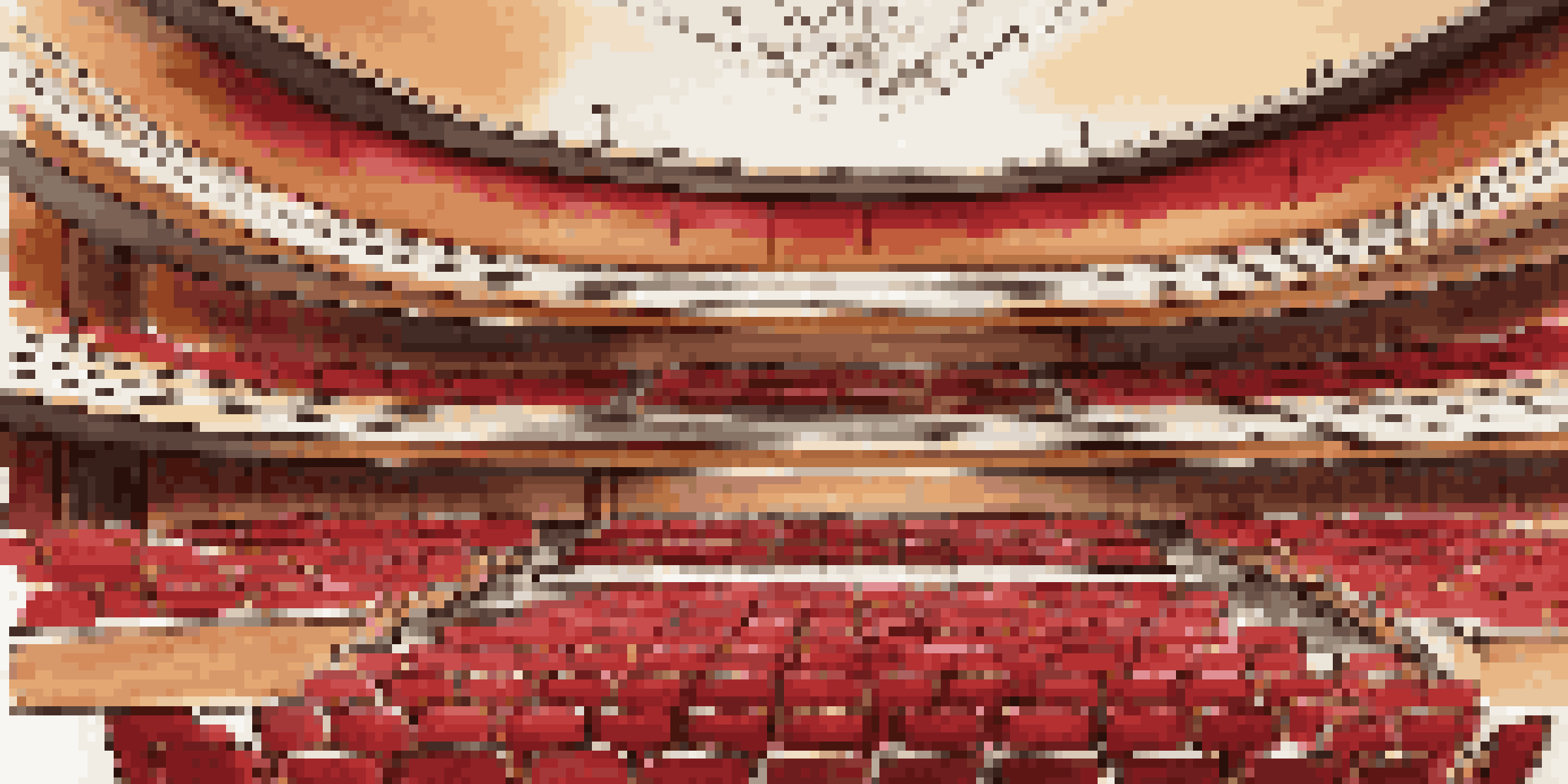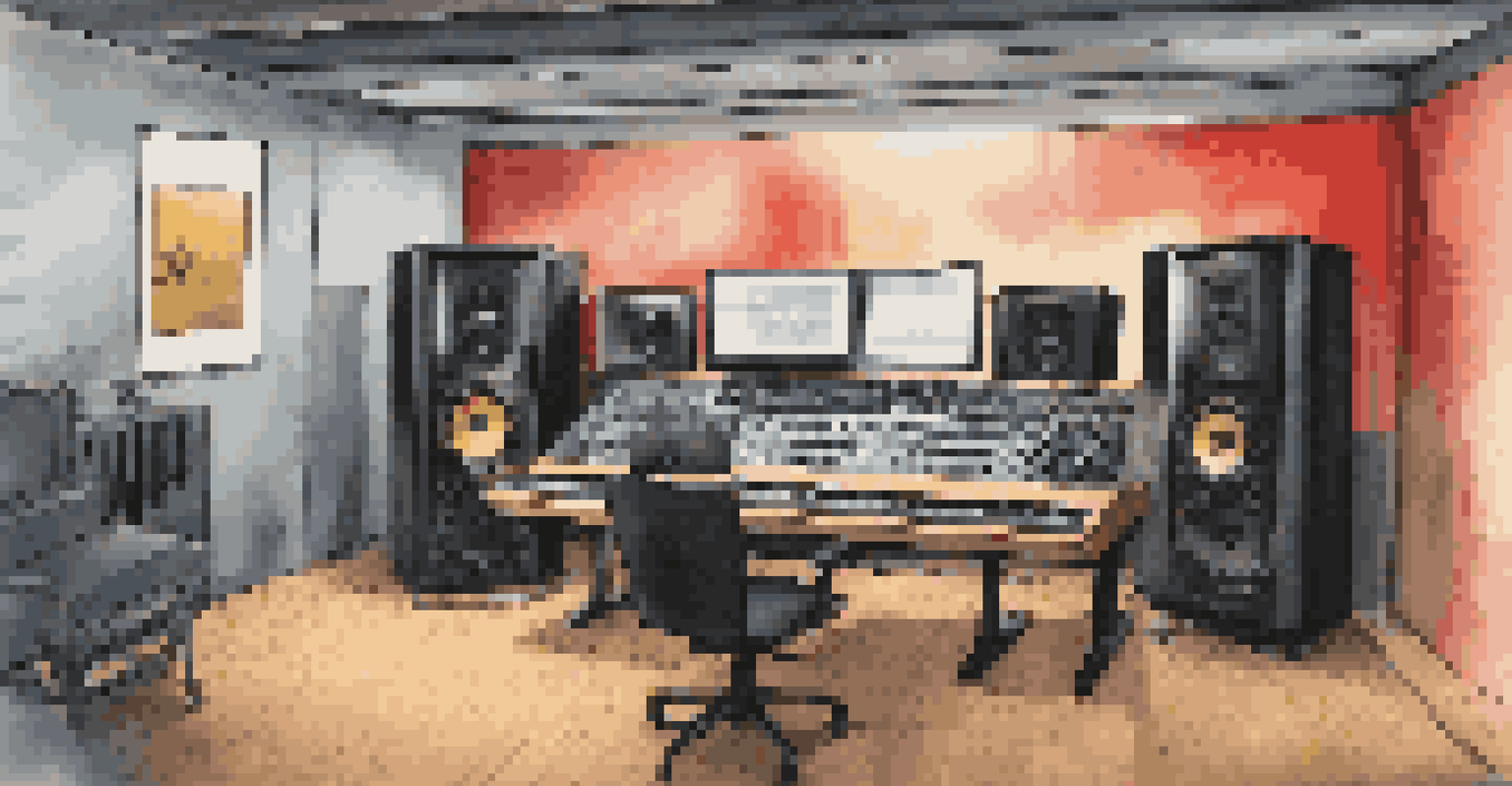Understanding the Acoustic Properties of Different Environments

What Are Acoustic Properties and Why Do They Matter?
Acoustic properties refer to how sound behaves in different environments. This includes how sound waves are absorbed, reflected, or transmitted by various materials. Understanding these properties is crucial, especially in fields like architecture, music production, and audio engineering.
Sound is the vocabulary of nature.
For example, a concert hall is designed with specific acoustic properties to enhance the sound quality of performances. Materials such as wood and fabric are often used to create a warm, rich sound. In contrast, a gymnasium might prioritize durability and ease of cleaning, leading to different acoustic considerations.
By grasping the basics of acoustic properties, we can better appreciate how our surroundings influence what we hear. This knowledge can enhance our experiences in music, film, and even everyday conversations.
The Role of Materials in Sound Absorption
Different materials interact with sound in unique ways, influencing how sound is absorbed or reflected. Soft materials, such as carpets and curtains, tend to absorb sound waves, reducing echoes and creating a quieter atmosphere. On the other hand, hard surfaces like concrete or tile reflect sound, which can lead to a more vibrant but sometimes chaotic sound environment.

For instance, think about a library versus a bustling café. The library's soft furnishings help maintain a peaceful environment, while the café's hard surfaces contribute to a lively, social soundscape. Each environment's acoustic properties cater to its intended use and the experience it aims to provide.
Understanding Acoustic Properties
Acoustic properties determine how sound interacts with various environments, influencing our experiences in music, film, and conversation.
Understanding the impact of materials allows us to make informed choices when designing spaces, ensuring they meet our acoustic needs. Whether you're a homeowner looking to improve your living room or a business owner optimizing a workspace, materials play a pivotal role.
How Room Shape Affects Sound Quality
The shape of a room can significantly influence acoustic properties. For example, a rectangular room might create sound reflections that lead to echoes, while a dome-shaped room can enhance sound distribution. This is why concert halls often feature unique architectural designs to optimize acoustics.
The essence of sound is to be heard, and it is the place that gives the sound its meaning.
Consider how sound behaves in a square room versus a circular one. In a square room, sound waves may bounce off the walls in a way that creates uneven sound distribution, while a circular room can allow for smoother sound flow. This can be crucial for performances where every note counts.
By understanding how room shape affects sound quality, architects and designers can create spaces that enhance auditory experiences. This knowledge is essential for ensuring that music, speeches, and other sound-driven events resonate as intended.
Outdoor Environments and Their Acoustic Characteristics
Outdoor environments present unique challenges and characteristics when it comes to sound. Factors like wind, temperature, and background noise can all impact how sound travels. For instance, sound can carry further on a calm day, while wind can distort or diminish sound waves.
Think about a music festival held in a park. The vast open space may allow sound to travel freely, but nearby traffic or neighboring events can introduce unwanted noise. Understanding these outdoor acoustic properties helps event planners create optimal listening experiences.
Materials Impact Sound Quality
The choice of materials, like carpets or concrete, significantly affects sound absorption and reflection, shaping the acoustic environment.
By recognizing how different elements affect sound in outdoor settings, we can better manage noise pollution and enhance sound quality. This knowledge is especially valuable for urban planners and environmentalists focused on creating harmonious outdoor spaces.
The Influence of Human Activity on Acoustic Properties
Human activity can dramatically alter the acoustic properties of an environment. For example, bustling crowds can create a lively atmosphere but also add to the overall noise level. This interaction between sound and human presence is an essential consideration in public spaces like theaters and restaurants.
Imagine a quiet café in the morning versus a busy lunchtime rush. The same space can feel entirely different acoustically based on the number of people and their activities. Understanding how human activity affects sound helps business owners create the desired ambiance for their customers.
By considering the acoustics of human activity, designers can create spaces that cater to specific needs, such as promoting conversation in a restaurant or minimizing distractions in an office. This insight can enhance user experiences across various environments.
Natural Elements and Their Impact on Sound
Natural elements, such as trees and water bodies, can significantly affect sound propagation. For instance, trees can act as sound barriers, absorbing and diffusing sound waves, while water surfaces can reflect sound, altering how we perceive it. These natural features play a vital role in shaping outdoor acoustic environments.
Consider a riverside park: the sound of flowing water can create a calming atmosphere, while the surrounding trees may help filter out urban noise. This harmonious relationship between nature and sound can enhance our overall experience in outdoor settings.
Human Activity Alters Acoustics
Human presence and activity can transform the acoustic characteristics of a space, impacting the atmosphere in public venues.
By understanding how natural elements influence sound, we can design parks and outdoor spaces that promote tranquility and enjoyment. This knowledge is essential for landscape architects and urban planners aiming to create balanced environments.
Technological Advances in Acoustic Design
Advancements in technology have revolutionized acoustic design, providing tools to analyze and optimize sound in various environments. Software programs can simulate how sound behaves in different spaces, helping architects create designs that enhance acoustics. This technology allows for more precise planning and execution.
For example, musicians and audio engineers now use advanced sound analysis tools to perfect recording environments. These innovations enable them to create spaces that enhance audio quality, whether in a studio or a concert hall. This blend of art and science is reshaping how we experience sound.

By staying updated on technological advances, designers and engineers can create spaces that not only look good but also sound incredible. This fusion of creativity and technology is essential for achieving the best acoustic outcomes.